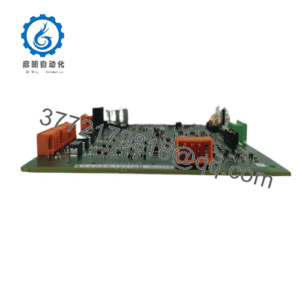Description
In the unforgiving landscape of industrial automation, where scaling safety systems without compromising fault tolerance can turn a straightforward expansion into a validation nightmare, engineers routinely confront the constraints of rigid chassis designs that limit I/O reach or introduce latency in redundant paths. Visualize a distributed SIS across a fertilizer complex or a multi-bay ESD in mining ops: core TMR logic needs to extend seamlessly to remote termination points for sensors and effectors, but legacy buses falter with distance-induced jitter, cable clutter, or single-link vulnerabilities, risking signal skews that undermine voting integrity and spike reconfiguration efforts. Here, the ICS Triplex T8311 Trusted TMR Expander Interface asserts itself as the pivotal extender, resolving these scalability hurdles by bridging the Inter-Module Bus to remote chassis with preserved high-bandwidth, fault-tolerant communication—ensuring your process control remains deterministic across spans up to kilometers.
This interface proves indispensable in architectures chasing SIL 3 certification, such as HIPPS loops or compressor safeguards, where expander delays could desync TMR slices and invite hazardous excursions. From retrofits I’ve overseen in upstream facilities, crews grapple with expander mismatches that demand fiber overhauls or custom buffers, bloating timelines and eroding the high reliability baked into Trusted platforms. The ICS Triplex T8311 sidesteps this by acting as the master conduit, leveraging UTP or fiber for robust daisy-chaining while embedding diagnostics to preempt link faults—transforming fragmented racks into a unified, resilient fabric. In the realm of industrial automation dictated by IEC 61508, it champions modular growth without the trade-offs, letting you layer in I/O density for evolving demands like additional flame scanners or pressure pilots, all while upholding the triple-voted precision that safety hinges on.
Essentially, the ICS Triplex T8311 recasts expansion from a liability into a lever for agility, empowering deployments where process stability demands not just more points, but more assurance. It’s the interface that harmonizes core intelligence with field extremities, delivering the bandwidth and tolerance that keep disruptions at bay in mission-vital process control.
Within a Trusted TMR ensemble, the ICS Triplex T8311 operates as the linchpin for chassis federation, nesting into the T8100 controller’s slots to translate IMB traffic—your TMR processor’s high-speed, voted data stream—onto the Expander Bus for downstream propagation. It equips three redundant channels per link, each clocked at 50 MHz to sustain 250 Mbps throughput, interfacing via backplane to T8310 expander processors that host I/O modules in satellite chassis. Envision it upstream of those remotes: commands from a T8110 processor traverse the T8311’s isolation barriers, emerging as synchronized triplets over copper (up to 30m) or fiber (up to 10km via converters), feeding voted execution without bandwidth bottlenecks.
This setup interacts intuitively with the broader stack—power rails from the host chassis energize it, while downstream expanders mirror the IMB’s fault-masking, rerouting around cable nicks through automatic diagnostics that poll link health and alert via Modbus or Profisafe to your HMI. Hot-swappable by design, it self-tests on insertion, flagging slice mismatches so you maintain quorum without cold restarts; pair it with termination boards for field tie-ins, and it scales to multi-rack arrays where a central controller governs dispersed I/O islands. In hybrid migrations, it accommodates legacy UTP runs alongside fiber upgrades, its galvanic isolation quelling EMI from parallel power lines.
Positioned at the expansion frontier of your automation hierarchy, the ICS Triplex T8311 ensures expander chassis behave as seamless extensions, not appendages—delivering the low-latency fidelity for real-time loops like turbine overspeed trips. For commissioning teams, its plug-and-play addressing via Workbench software minimizes mapping drudgery, while built-in loopback modes verify end-to-end integrity pre-go-live. This isn’t about stretching cables; it’s about extending trust, crafting a process control domain where distance dilutes neither speed nor safety.
- T8311
| Specification | Details |
|---|---|
| Model Number | T8311 |
| Brand | ICS Triplex (Rockwell Automation) |
| Type | TMR Expander Interface Module |
| Input Voltage | 20-32 V DC |
| Operating Temp Range | -5°C to +60°C |
| Mounting Style | Chassis Slot |
| Dimensions | 303 x 31 x 266 mm |
| Weight | 1.14 kg |
| Interface/Bus | Inter-Module Bus / Expander Bus |
| Compliance | CE, RoHS, IEC 61508 SIL 3 |
| Supported Protocols | Modbus, Profisafe |
| Typical Power Draw | 40 W |
Harnessing the ICS Triplex T8311 unlocks a realm of unyielding scalability that fortifies system sprawl, channeling TMR data across chassis boundaries to sustain voted decisions amid extender faults—picture remote I/O racks holding sync during a fiber transient, averting the desynchronization that could idle a fractionation tower and its cascade of downstream halts. Forged for the sprawl of live industrial theaters, it anchors persistent throughput by buffering expander links against attenuation, so your core logic perceives peripherals as proximate, honing response times that trim process variances and bolster yield curves without perpetual oversight.
This interface further refines upkeep trajectories, its channel-embedded monitors surfacing cable integrity or clock drifts through LED cues and event buffers, streamlining fault hunts to targeted swaps rather than exhaustive traces—vital in ops where audit trails must prove SIL adherence quarterly. Across federated deployments, it alleviates design burdens by normalizing bus extensions, permitting organic additions like extra DO channels for interlocks without rehosting processors or recalibrating timings, thus conserving cycles for innovations such as integrated cybersecurity overlays. Maintenance personnel lean on its redundancy for confidence, knowing a duplex link can limp through a slice outage, preserving the diagnostic depth that informs predictive spares planning.
On a deeper level, the ICS Triplex T8311 stewards holistic endurance, its 250 Mbps backbone resisting thermal gradients to prolong mean time to degradation, while enabling cost-tiered expansions—copper for near-field, fiber for vast arrays—that align with capex realities. The dividends compound: mitigated outage risks yielding steadier revenues, leaner validation footprints from inherent HIFT diagnostics, and the strategic latitude to evolve safety nets in lockstep with process ambitions, all rooted in an extender that doesn’t just connect, but conserves integrity.
In LNG liquefaction trains, the ICS Triplex T8311 federates controller chassis to expander bays housing cryogenic valve I/Os, navigating fiber spans through chilled vaults to enforce high-reliability process control with sub-ms voting latency—crucial for critical system uptime where expander glitches could vent boil-off and spike emissions. Its bus tolerance absorbs vibration from compressors, ensuring seamless signal relay in extended process control environments.
For automotive assembly ESD networks, it chains central TMR hubs to perimeter racks for robot safeties and conveyor halts, thriving amid EMI from welders via isolated UTP links up to 30m, supporting fast data cycles that keep lines fluid under continuous uptime mandates. The ICS Triplex T8311 facilitates modular integration here, allowing bay additions mid-shift without logic reproof.
In wastewater treatment SCADA, the ICS Triplex T8311 extends I/O to remote pump stations over kilometer fibers, enduring humid exposures to maintain TMR coherence for overflow barriers—deployed in process control environments demanding SIL 3 expanse for regulatory resilience against flood risks.
T8310 – Companion expander processor module that pairs with T8311 for remote chassis TMR execution.
T8100 – Host controller chassis that accommodates the T8311 for initial IMB-to-expander bridging.
T8110 – TMR processor core that feeds the T8311 for voted command distribution in safety loops.
T8320 – Fiber converter add-on for extending T8311 links beyond copper limits in long-haul setups.
T8314 – Enhanced expander interface variant with integrated redundancy for dual-path expansions.
T8451 – Digital output module for populating T8310 chassis downstream of T8311 extenders.
T9401 – Analog input counterpart for balanced I/O in expander racks linked via T8311.
When preparing to seat the ICS Triplex T8311 in your T8100 slots, scrutinize expander cable specs first—UTP maxes at 30m without repeaters, and fiber demands matched converters to avert modal dispersion; align IMB firmware via Workbench scans to dodge handshake stalls. Slot it into designated positions (typically 11-13), securing with ejectors before powering up, and probe initial link LEDs for triad sync—green across channels signals quorum, but partials warrant reseating. Factor in rack airflow; cluster it away from high-dissipators to stay under 60°C, and bond grounds meticulously to curb induced noise in multi-bay arrays.
For sustained vigilance, inspect UTP terminations semiannually for jacket cracks or connector corrosion, especially in conduit runs prone to flex—clean with approved solvents, then continuity-test to baseline. Monthly, harvest diagnostic dumps for bus utilization spikes that foreshadow overloads, cross-referencing against SOE logs; if amber faults linger, isolate the slice via software bypasses for granular probes. Annual end-to-end simulations—mimicking cable faults across the full span—validate rerouting efficacy without exposing fields, while syncing expander clocks during low-demand phases preserves phase lock. These protocols, drawn from deployment playbooks, nurture the T8311’s bridging prowess, ensuring your TMR web endures the miles without fraying at the seams.

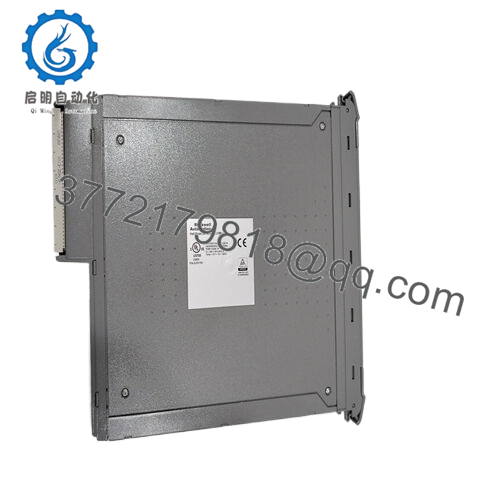
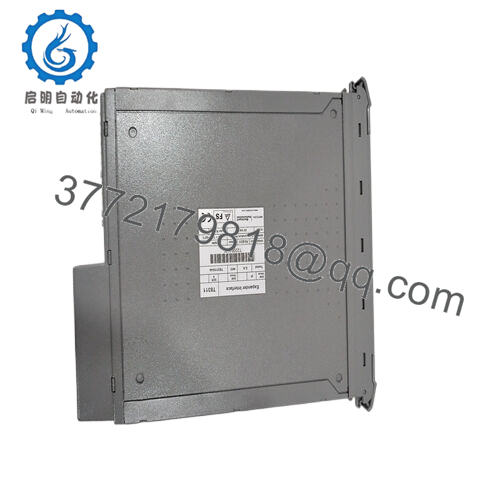
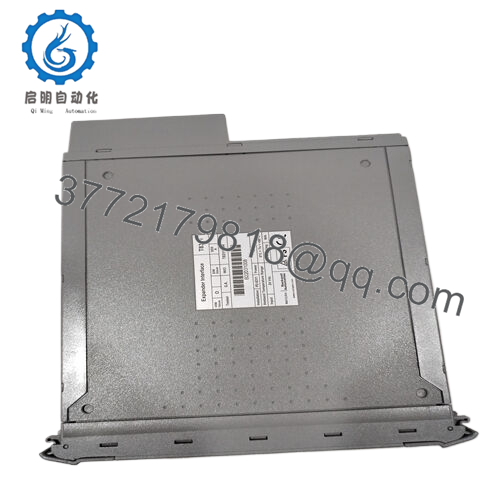
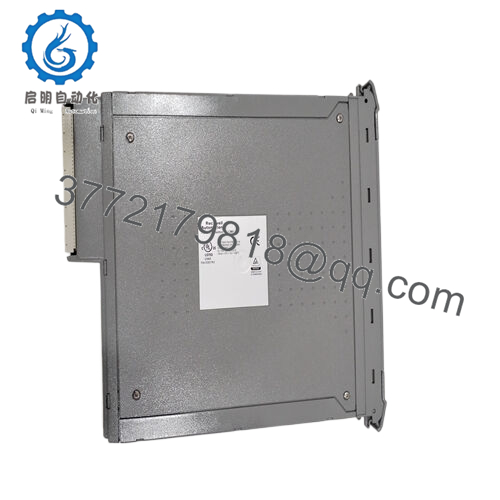
 WhatsApp: +86 16626708626
WhatsApp: +86 16626708626 Email:
Email:  Phone: +86 16626708626
Phone: +86 16626708626
